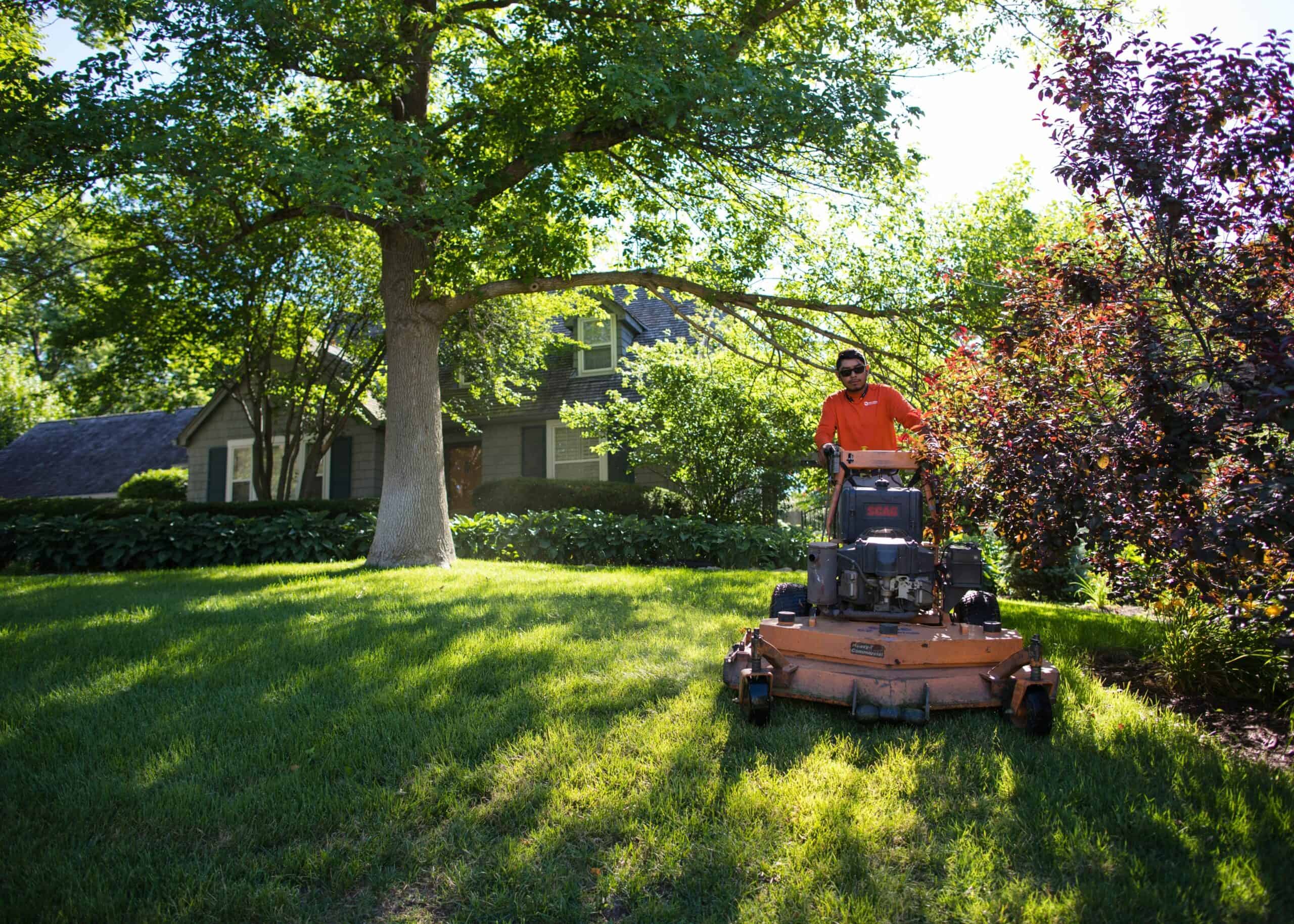
25 Mar Spring Lawn Maintenance Tips
Spring is quickly approaching, so let’s get your lawn geared up and ready with some spring lawn maintenance tips that will be sure to have your lawn and landscape thriving in no time. The warmer weather the last couple of weeks has our Nebraska landscapes greening up. As ground temps warm up, it signals plants to come out of dormancy and start flourishing again. Before we know it, our lawns and gardens will be full of activity and color again!
The first mow of the season
You spring clean your home, so you should be spring clean your small engine equipment. Startup your mower to make sure it is running correctly; get blades sharpened for the start of the year. It is always good to keep mower blades sharp so they cleanly slice through grass blades instead of tearing edges apart. Torn grass blades can make turf susceptible to a variety of diseases.
The timing for your lawn’s first mow varies depending on the area you live in, sun exposure, moisture levels, and ground temperatures. Grass comes out of dormancy depending on your area’s environment and temperatures. The first mow of the season shouldn’t take place while the grass is still dormant. Mow height requirements are different depending on the grass type, but no matter the type of grass, you should never remove more than a third of the leaf blade at a time.
Fertilize with proper nutrition
Spring is the most important time of the year to fertilize your lawn. Grasses are coming out of dormancy, and we want to promote healthy roots and the return of green leaf blades. A healthy lawn also helps suffocate weeds. It is best to wait until the last frost before fertilizing your lawn. If you don’t wait to fertilize your lawn and another frost hits, your grass will go back into dormancy, which will make it more challenging to get it to green up again. Not sure what to apply when? Let us take the guesswork out of it for you. We have several different maintenance packages available to fit your lifestyle and the time you want to or don’t want to commit to your yard.
Time to turn on your Irrigation systems
Throughout a typical winter here in Nebraska, a dormant lawn will not need to be watered because of the snow we receive throughout the winter months. However, this year, we were unseasonably dry with warmer than average temperatures. At the same time, it is not safe for irrigation systems to be powered back on mid-winter. It was not unusual to see people watering their lawns and landscape beds with a garden hose on warmer winter days this year. Although dormant grass requires less water than it does while actively growing, it still needs water. The best time to start watering your lawn is when your grass starts to green up from winter’s dormancy. A good rule of thumb is about 1-inch of water per week, including what the area receives in rainfall. If you are questioning how much water your lawn is receiving, it might be time for an irrigation audit. Irrigation audits provide information about how much water each area of your lawn is receiving within a given amount of time. Our team of irrigation experts checks sprinkler heads and rotation for proper irrigation during the time of activation and summer checks.
Control Weeds
Controlling weeds is not a one-stop method. At Sun Valley Landscaping, we take a three-step approach. We apply an early pre-emergent to the lawn around this time of year and the second round of pre-emergent after ground temps hit 50 degrees to help prolong the life of the pre-emergent and its benefits. The pre-emergent is to prevent most broadleaf weeds and warm-season grasses like crabgrass and foxtail. In the fall, we aerate and overseed lawn clients’ yards to support more robust turf growth. Thicker, healthier grass naturally suffocates out smaller weeds, not giving them a chance to grow. Finally, we spot treat any weeds that are present when we are out on site.
Treat for Grubs
If your lawn has suffered from grub or other insect damage in the past, it is a good idea to continue to manage that threat and apply a broad-spectrum insecticide. We typically use a grub control product in May-June, and this helps prevent what will later turn to beetles once they emerge from the ground. Grubs numbers can be diminished or eliminated so they do not cause damage and turn into beetles, like Japanese beetles that can destroy a tree in a day.
Signs of mold and other pests
Signs of mold, like snow mold, may start to show up as your lawn comes out of dormancy. From snow mold to bagworms and rabbits, pests are around every corner. Here are some great tips for helping you treat six common pests and diseases. If you notice any diseases in your lawn, it is best to call an expert to have it diagnosed and a game plan to get your lawn back on a healthy track.
Lastly, we invite you to call one of our customer service representatives if you have any questions about our fertilization or lawn maintenance plans to help answer any remaining questions that you may have.


